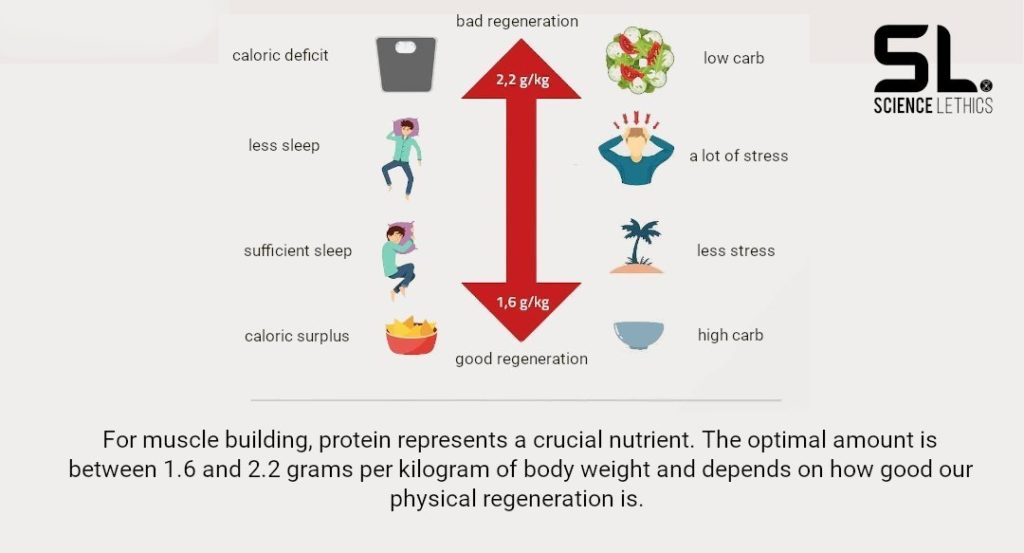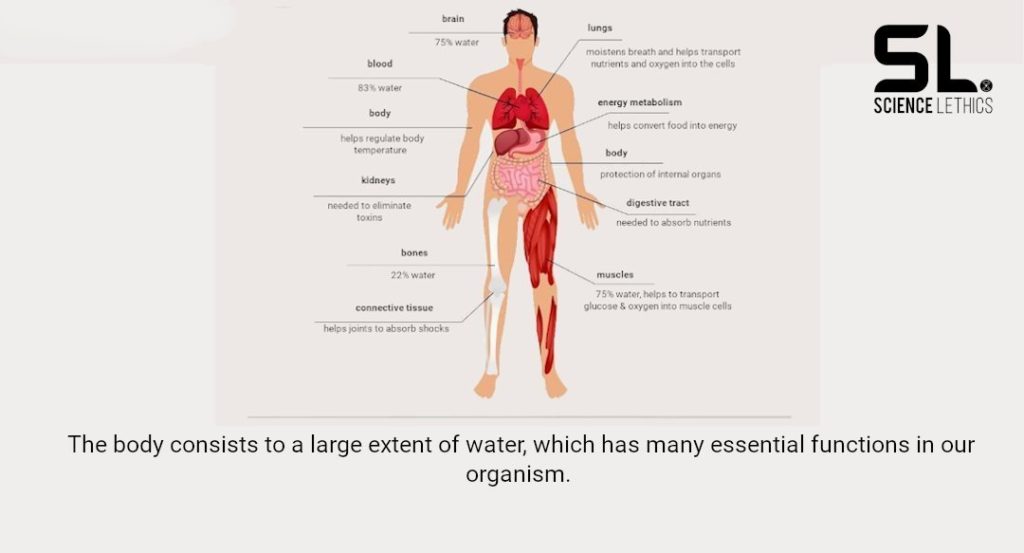We all need to eat. Whether the goal is to build muscle, lose fat, be fit or get strong. Food is essential to our survival. What and how much we eat, on the other hand, not only plays a role in our health, but together with training and recovery, also in achieving our physical goals. That’s why we’ve put together the five most important tips for muscle-building nutrition.
TIP 1: ADAPT YOUR DIET TO YOUR GOALS!
Even though the first tip for nutrition to build muscle may sound simple, many athletes don’t seem to understand this factor or at least don’t implement it. How often do you hear from people who want to build muscle or lose fat, but simply nothing changes? Then when you ask them about their diet, the problem becomes clear. The diet is not aligned with the goals! If we want to gain body weight in the form of muscle mass, there is no way around taking in more energy through food than our body uses. On the other hand, we have to burn more energy than we consume if we want to lose body weight.
It is often the case that people who start out with a slim physique and want to gain muscle significantly overestimate their own caloric intake. They then claim that they are already eating so much, but are not getting any closer to their goals. However, if you then have them write down exactly what and how much they are eating, you wonder why they are able to maintain their weight at all. They are simply not used to eating that much in order to gain weight. Additionally, working out consumes energy, which must be compensated for by eating to build muscle. It is usually the other way around for athletes who initially start out with the goal of reducing body fat. They like to underestimate their energy intake and overestimate their consumption.
However, it is not uncommon for the goal to simply be unclearly defined or for too much to be wanted at once. Yes, it is possible to build muscle and reduce fat at the same time. However, the lower the body fat percentage at the beginning and the longer one has been training, the more difficult this undertaking becomes in practice. In these cases, you should think about which goal has priority for the moment. Do I want to lose fat first, before I start with an optimal diet for muscle building, or am I satisfied with my body fat percentage and therefore want to build muscle and possibly later get rid of the body fat built up in the process by dieting? It doesn’t take five minutes to sit down once and write down which goals are on the priority list and in what order.
Tip 2: The calorie balance is the most important thing
If you find yourself in any of the above categories and still want to get closer to your goals, then initially there will be no way around keeping a food diary and working out how many calories you eat each day. Apps like Fddb, MyFitnesspal, Yazio or HealthifyMe can be a great help. Based on this, the diet can then be adjusted to the exact goals with the help of the change in body weight.
A guideline for nutrition to build muscle is an increase of 0.25 to 0.5 percent of body weight per week, with beginners at the upper end of the spectrum and advanced athletes with more than two years of training experience at the lower end [1]. On the other hand, if the primary goal is fat loss while maintaining muscle mass and training performance, weight loss of no more than 0.5 to one percent of body weight per week should be targeted, whereas decreasing body fat percentage should be kept at the lower end of this recommendation [2].

It is also possible to move to a more intuitive and flexible approach over time. However, to do this, you first need to get an overview and feel for what foods are needed in what quantities to customize your diet for muscle building.
Now some of you may ask what about macros, hormones like insulin and all those things. Don’t they also make a significant difference? Well, certainly macronutrient composition ranks right behind calories. However, scientific research shows that shifts in the proportions of carbohydrates and fats tend to rank lower than calories in terms of changing body composition. Fats are essential and a certain amount is therefore indispensable for the body. But a diet for muscle building can also lead to success with little fat and many carbohydrates. Just as with a lot of fat and few carbohydrates [3, 4].
Tip 3: Make protein a constant
As we have just described, the ratio of carbohydrates and fats in the diet plays a subordinate role for muscle building, as long as the calorie balance is right at the end of the day. Although a certain amount of fats is essential for the body and carbohydrates support strength training performance, no macronutrient is as important as protein, especially for muscle building. After all, our skeletal muscle tissue is made up of about 18 percent of this substance, while water makes up 75 percent of the total rest.
Your protein intake should not be directly dependent on your total caloric intake, but should be based on the percentage of fat-free mass your body possesses. However, since fat-free mass is not that easy to determine for many individuals, we will assume at this point that your body fat percentage is not too high if you choose muscle building as your primary goal. At this point, scientific research indicates that an intake of between 1.6 and 2.2 grams of protein per kilogram of body weight per day is optimal for building muscle [1].

The same amount is also suitable if the goal is to reduce body fat instead. However, protein is also the most satiating nutrient. If you’re having trouble getting full, adding more protein to your diet could help. Contrary to popular belief, a high-protein diet is by no means harmful under the condition of good kidney health. Slightly higher amounts could even minimize body fat gain and improve blood lipid levels due to the thermic effect of this macronutrient [5].
Although in the diet for muscle building, protein intake throughout the day seems more important than its optimal distribution throughout the day, recent studies suggest that it is optimal to distribute the total amount evenly over three to four meals [1, 6]. The reason for this is that the anabolic effect of a mixed meal lasts for approximately six to twelve hours [7]. For example, the recommendation of 1.6 to 2.2 grams per kilogram of body weight can be divided into four meals a day, each containing 0.4 to 0.55 grams per kilogram of body weight.
Tip 4: Fluid intake
We have already talked a few times recently about the importance of fluid intake in the diet for muscle building, but also for general health. In fact, sufficient and regular water intake is more essential for the body than eating enough food every day. Although our muscle mass consists of about 75 percent water, we do not build muscle by drinking alone. However, water performs various important tasks in connection with food.
After all, water is responsible for numerous essential tasks in our body:
- Transport of nutrients, oxygen, messenger substances, etc. via the blood
- Component of all cells in the body, including in the brain, muscles and bones
- Supports digestion and conversion of nutrients into energy
- Excretion of metabolic by-products such as carbon dioxide or urea
- Regulation of body temperature
Through beverages alone, men should consume at least three liters and women 2.2 liters of fluid per day [8]. However, the exact amount varies from individual to individual and depends on numerous factors. In practice, we should always drink enough so that the urine is always clear and bright. If we drink too little, the urine is very concentrated, which means that the percentage content of excretory products is higher [9].

Tip 5: Enjoy it!
The factor of consistency is probably the most important point of all in the diet for muscle building. The most well thought out diet plan with the perfect calories, macronutrients and foods will not bring success if it doesn’t taste good to you, doesn’t offer enough variety and therefore you won’t stick to it in the long run. Listen to your body, use foods you like, cook meals that you enjoy, fit into your calorie balance at the end of the day, and are conducive to your goals. There are many different varieties of each food group. Be it fruits, vegetables, meats, fish, different dairy products, nuts or carbohydrate sources.
There are many recipes and instructions for fitness-friendly meals on the internet. Get creative and try your hand at it yourself. On the other hand, if you’re a bit lazy in the kitchen, the supermarket offers a range of ready-made, protein-rich foods these days. The odd candy bar or a pizza now and then will also do. Although they provide fewer vitamins and minerals than unprocessed foods, they won’t significantly impede your progress as long as you don’t overdo it. We’re not saying that fruits, vegetables, and fish don’t belong in your muscle-building diet as well, just that you don’t have to meet your caloric needs through them alone.
Conclusion and summary
The first step towards a diet that supports muscle building in the best possible way is, without a doubt, setting goals. They determine the direction we must take by adjusting our caloric intake. This, in turn, should be largely covered by carbohydrates and fats, although the exact ratio between the two is less crucial. Protein intake, however, should be a constant in the diet plan, but again, more is not always better.
An often underestimated parameter that affects overall food intake and its processing in the body is fluid intake. However, probably the most important factor here is consistency. Make sure that your food tastes good and that you can stick to it in the long term. It is not crucial to eat the same thing every day. Instead, variety on the table makes for a more complete intake of micronutrients and, for many people, more satisfaction.
References
- Iraki, Juma, et al. “Nutrition Recommendations for Bodybuilders in the Off-Season: A Narrative Review.” Sports 7.7 (2019): 154.
- Helms, Eric R., Alan A. Aragon, and Peter J. Fitschen. “Evidence-based recommendations for natural bodybuilding contest preparation: nutrition and supplementation.” Journal of the International Society of Sports Nutrition 11.1 (2014): 1-20.
- Vargas-Molina, Salvador, et al. “Effects of a ketogenic diet on body composition and strength in trained women.” Journal of the International Society of Sports Nutrition 17 (2020): 1-10.
- Vargas, Salvador, et al. “Efficacy of ketogenic diet on body composition during resistance training in trained men: a randomized controlled trial.” Journal of the International Society of Sports Nutrition 15.1 (2018): 31
- de Moraes, W.M.A.M., et al., Protein Overfeeding is Associated with Improved Lipid and Anthropometric Profile thus Lower Malondialdehyde Levels in Resistance-Trained Athletes. International Journal of Sports Science, 2017. 7(2): p. 87-93.
- Yasuda, Jun, et al. “Evenly Distributed Protein Intake over 3 Meals Augments Resistance Exercise–Induced Muscle Hypertrophy in Healthy Young Men.” The Journal of Nutrition (2020).
- Layman, Donald K. “Protein quantity and quality at levels above the RDA improves adult weight loss.” Journal of the American College of Nutrition 23.sup6 (2004): 631S-636S.
- Campbell, Sheila. “Dietary Reference Intakes: Water, potassium, sodium, chloride, and sulfate.” Clinical Nutrition Insight 30.6 (2004): 1-4.
- Webb, Marquitta C., Sinead T. Salandy, and Safiya E. Beckford. “Monitoring hydration status pre-and post-training among university athletes using urine color and weight loss indicators.” Journal of American College Health 64.6 (2016): 448-455.
